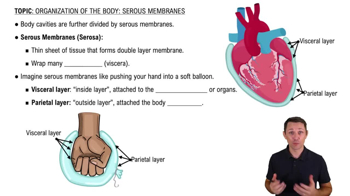Multiple Choice
Which of the following correctly lists the serous membranes associated with the ventral body cavities?
58
views
 Verified step by step guidance
Verified step by step guidance Verified video answer for a similar problem:
Verified video answer for a similar problem:



 4:9m
4:9mMaster Serous Membranes with a bite sized video explanation from Bruce Bryan
Start learning